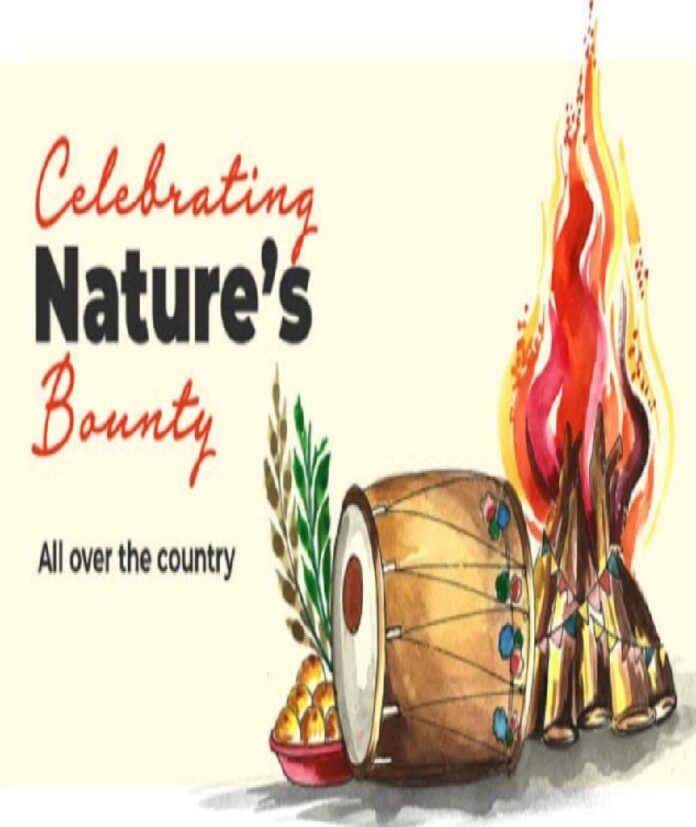The stories behind festivals are fascinating. Even more so when different regions and cultures celebrate at the same time but with stories and customs of their own!
In the next few days, the sun will enter the Capricorn or Makara zodiac and it’s an important occasion for agricultural societies who follow the changing of seasons and the journey of the sun. Lohri, Bihu, Pongal, Uttarayan, Sankranti – the festival names differ by region but the celebrations have some similarities. See if you can spot them!
Lohri marks the harvest of Rabi crops, the end of months of hard work and long winter days. People dress up in colourful clothes and gather around bonfires to sing and dance through the night.
On Lohri, til (sesame), corn, jaggery, and other sweets are thrown into the fire as a kind of offering to the Sun god. Think of all the crackling & popping that will happen!
Here, the festival marks the harvest of paddy and sugarcane. Lakshmi, the goddess of fortune, is worshipped and much of the celebration revolves around food, especially items using freshly harvested rice, palm jaggery, and coconut. Bhaja pithe or coconut-stuffed sweet potato fry is a traditional Poush sweet. Try your hand at making this delicious sweet!
Celebrations start on Uruka, which means ‘the end’ signifying the end of the harvest. Traditional games like tekeli bhonga (breaking a pot while blindfolded) are played. Elaborate feasts of rice and meat are prepared which everyone enjoys with rice beer through the night. At dawn the next day, bonfires are built on the fields, a custom called meji joluwa.
On the first day, youngsters build makeshift huts called bhelaghar from bamboo and banana leaves, in which the celebrations happen. At the end of the festivities, these huts are burned until next year.
In Tamil, ‘pongal’ literally means ‘bubble over’ and this indicates the bounty of a harvest. Elaborate kolams or rice flour rangolis are drawn in front of houses. Sweet dishes of rice, jaggery, and ghee are offered to the sun and other gods. Cattle that help farmers through the year, especially bullocks, oxen, and cows, are also decked up and pampered during the festival.
Chakkara pongal is a sticky rice dish sweetened with jaggery, lightly flavoured with cardamom, and garnished with cashews. If you love dessert for breakfast, you have to try this!
Meeting exchanging sweets is a big part of Sankranti celebrations. In Karnataka, the dish of the day is ellu-bella, made of til, diced coconut, and sugar. Maharashtrians make til ke ladoos. In Odisha, the specialty is chhena poda, a sweet made of homemade cheese-curd.
In Telugu states, Bhogi is the first day of sankranti, during which the house is cleaned. Old clothes, furniture and other items to be discarded are piled up and burned. These bonfires signify a new beginning.
Kite-flying is the biggest, most anticipated event around this festival and preparations begin weeks in advance. It is not only a way to make merry with family and friends, but also enjoy the sunshine emerging after the worst of winter.
Gujarati lapsi is a simple traditional sweet made of broken wheat and jaggery with a delicious nutty flavour.
In both Karnataka and Maharashtra, sesame & jaggery sweets are exchanged along with a greeting. “Ellu bella thindu, olle matadi!” in Kannada and “Til-gud ghya, god god bola” in Marathi both mean “Eat sesame-jaggery and speak only good things!”
Honestly, there are so many more wonderful dishes and interesting nuances to how Sankranti is celebrated – but one email or blog post isn’t enough to cover it all. We do hope we’ve piqued your interest enough to explore more. #KhabarLive #hydnews







